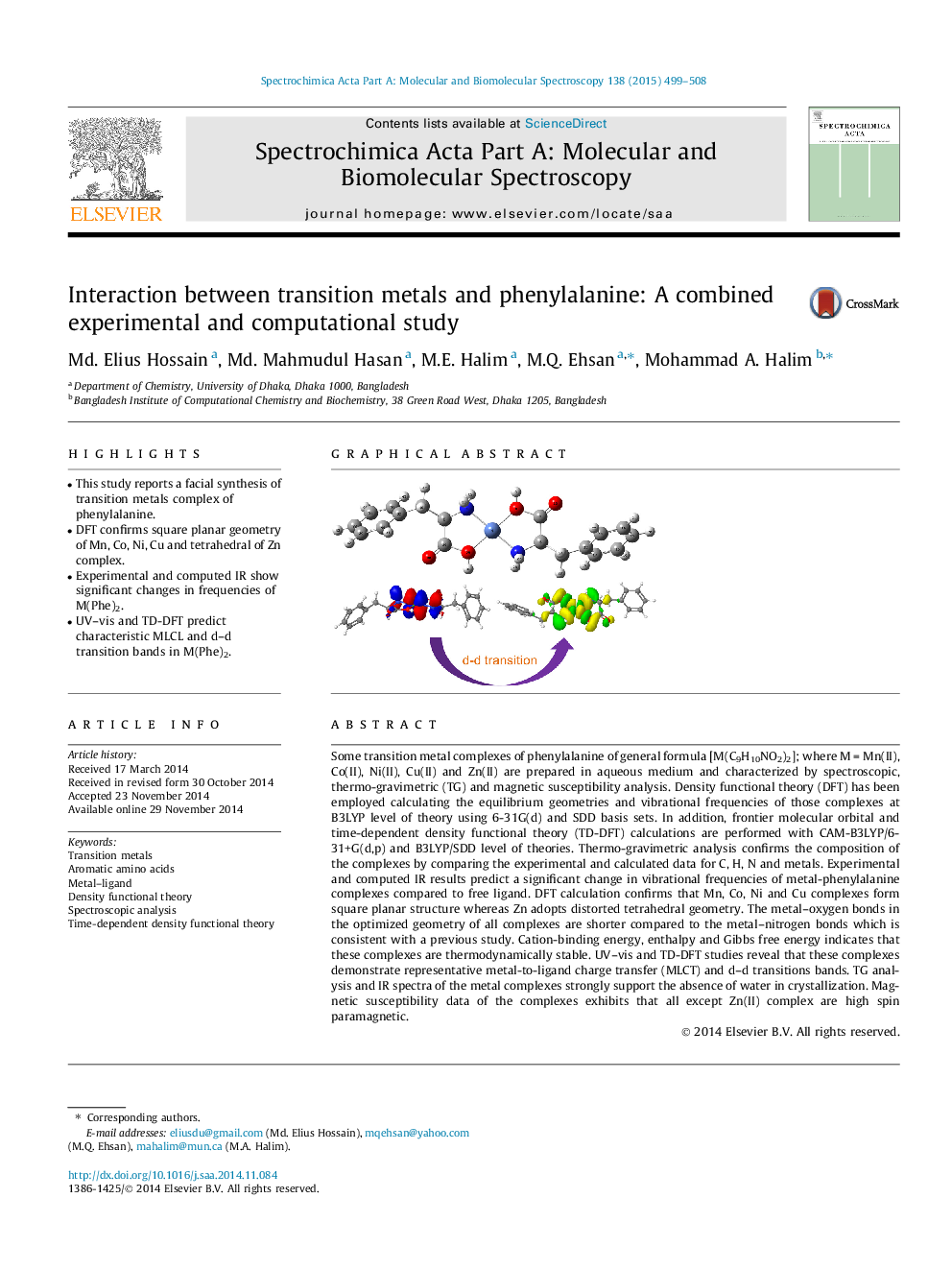| کد مقاله | کد نشریه | سال انتشار | مقاله انگلیسی | نسخه تمام متن |
|---|---|---|---|---|
| 1229087 | 1495231 | 2015 | 10 صفحه PDF | دانلود رایگان |
• This study reports a facial synthesis of transition metals complex of phenylalanine.
• DFT confirms square planar geometry of Mn, Co, Ni, Cu and tetrahedral of Zn complex.
• Experimental and computed IR show significant changes in frequencies of M(Phe)2.
• UV–vis and TD-DFT predict characteristic MLCL and d–d transition bands in M(Phe)2.
Some transition metal complexes of phenylalanine of general formula [M(C9H10NO2)2]; where M = Mn(II), Co(II), Ni(II), Cu(II) and Zn(II) are prepared in aqueous medium and characterized by spectroscopic, thermo-gravimetric (TG) and magnetic susceptibility analysis. Density functional theory (DFT) has been employed calculating the equilibrium geometries and vibrational frequencies of those complexes at B3LYP level of theory using 6-31G(d) and SDD basis sets. In addition, frontier molecular orbital and time-dependent density functional theory (TD-DFT) calculations are performed with CAM-B3LYP/6-31+G(d,p) and B3LYP/SDD level of theories. Thermo-gravimetric analysis confirms the composition of the complexes by comparing the experimental and calculated data for C, H, N and metals. Experimental and computed IR results predict a significant change in vibrational frequencies of metal-phenylalanine complexes compared to free ligand. DFT calculation confirms that Mn, Co, Ni and Cu complexes form square planar structure whereas Zn adopts distorted tetrahedral geometry. The metal–oxygen bonds in the optimized geometry of all complexes are shorter compared to the metal–nitrogen bonds which is consistent with a previous study. Cation-binding energy, enthalpy and Gibbs free energy indicates that these complexes are thermodynamically stable. UV–vis and TD-DFT studies reveal that these complexes demonstrate representative metal-to-ligand charge transfer (MLCT) and d–d transitions bands. TG analysis and IR spectra of the metal complexes strongly support the absence of water in crystallization. Magnetic susceptibility data of the complexes exhibits that all except Zn(II) complex are high spin paramagnetic.
Figure optionsDownload as PowerPoint slide
Journal: Spectrochimica Acta Part A: Molecular and Biomolecular Spectroscopy - Volume 138, 5 March 2015, Pages 499–508
